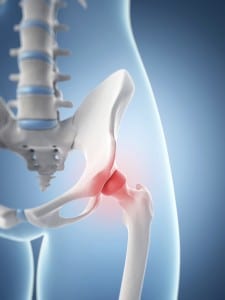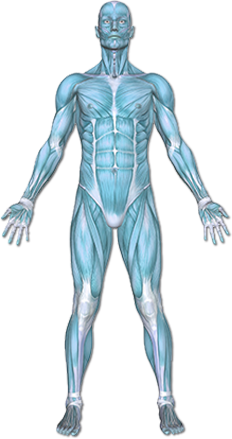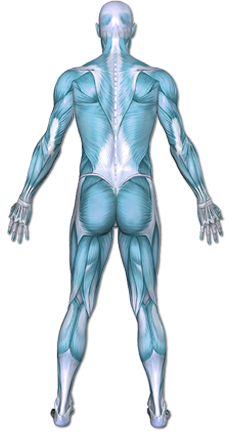Greater Trochanteric Bursitis
Bursitis is inflammation of a bursa. A bursa is a thin sac that lies between bone and soft tissue near certain joints. A healthy bursa allows smooth movement of soft tissue over bone. Inflammation can make it painful to move the nearby joint.


This content was created using EBSCO’s Health Library
Bursitis may be caused by:
- A blow to an area containing a bursa
- Repetitive stress on the bursa
- Infection in a bursa
- Long periods of pressure on joint—leaning on elbows, sitting or kneeling on hard surfaces
- Medical conditions that cause inflammation in joints such as rheumatoid arthritis or gout
If the stress is not relieved, bursitis can become a long-term condition.
This content was created using EBSCO’s Health Library
Factors that increase your chance for bursitis include:
- Repetitive motion activities, such as swimming, running, or tennis
- A job that requires:
- Repetitive motions such as hammering or painting
- Long hours in one position such as a carpenter kneeling
- Contact sports
- A puncture or deep cut that involves bursa
- Hip Injury
Spine Disease
This content was created using EBSCO’s Health Library
The main symptom of trochanteric bursitis is pain at the point of the hip. The pain usually extends to the outside of the thigh area. In the early stages, the pain is usually described as sharp and intense. Later, the pain may become more of an ache and spread across a larger area of the hip. Typically, the pain is worse at night, when lying on the affected hip, and when getting up from a chair after being seated for a while. It also may get worse with prolonged walking, stair climbing, or squatting.
This content was created using EBSCO’s Health Library
You will be asked about your symptoms and your physical activities. The painful area will be examined. Images may be taken of your bodily structures. This can be done with x-rays.
This content was created using EBSCO’s Health Library
Your therapist will educate you on pain relieving techniques, such as ice and decreasing painful activities. This diagnosis often occurs from muscular tightness and weakness. Your therapist will educate and assist you on proper stretching and strengthening exercises of the back, hip, and knee. They may need to perform hands on, manual therapy techniques to further increase your joint flexibility. The final phase of rehab will involve strengthening during functional activities and education to prevent this injury from recurring again.
This content was created using EBSCO’s Health Library
The following steps may help to prevent bursitis:
- Do not overdo sports and other activities.
- When doing a new activity, gradually increase the intensity and duration.
- Make sure you perform activities correctly.
- Wear properly fitting, protective pads if you play contact sports.
- Use proper safety equipment at work.
- Work with an ergonomic specialist to improve work related activities.
This content was created using EBSCO’s Health Library
This content was created using EBSCO’s Health Library Resources
- American Academy of Orthopaedic Surgeons
http://orthoinfo.aaos.org
- RCES:American Orthopaedic Society for Sports Medicine
http://www.sportsmed.org
CANADIAN RESOURCES
- Canadian Orthopaedic Association
- Canadian Orthopaedic Foundation
http://www.canorth.org
REFERENCES:
- Bursitis. Ohio State University Wexner Medical Center website. Available at: http://medicalcenter.osu.edu/patientcare/healthcare_services/spine_shoulder_pelvic_disorders/common_disorders_spine_sholder_pelvis/bursitis/Pages/index.aspx Accessed December 15, 2013.
- Elbow (olecranon) bursitis. American Academy of Orthopaedic Surgeons website. Available at: http://orthoinfo.aaos.org/topic.cfm?topic=A00028 Updated January 2011. Accessed December 15, 2013.
Hip bursitis. American Academy of Orthopaedic Surgeons website. Available at: http://orthoinfo.aaos.org/topic.cfm?topic=a00409 Updated August 2007. Accessed December 15, 2013. - Prepatellar bursitis. EBSCO DynaMed website. Available at: https://dynamed.ebscohost.com/about/about-us. Updated September 5, 2012. Accessed December 15, 2013.
- Questions and answers about bursitis and tendonitis. National Institute of Arthritis and Musculoskeletal and Skin Diseases website. Available at: http://www.niams.nih.gov/Health_Info/Bursitis/ Updated June 2013. Accessed December 15, 2013.
- Tendonitis/bursitis. American College of Rheumatology. Available at: http://www.rheumatology.org/Practice/Clinical/Patients/Diseases_And_Conditions/Tendinitis_and_Bursitis/ Updated February 2013. Accessed December 15, 2013.
This content was created using EBSCO’s Health Library


